9 Can’t-Miss Workflows to Automate your Sales Process

Andrea Felix
Andrea Felix | Nov 12, 2020 | 5 MIN READ
Nov 12, 2020 5 MIN READ
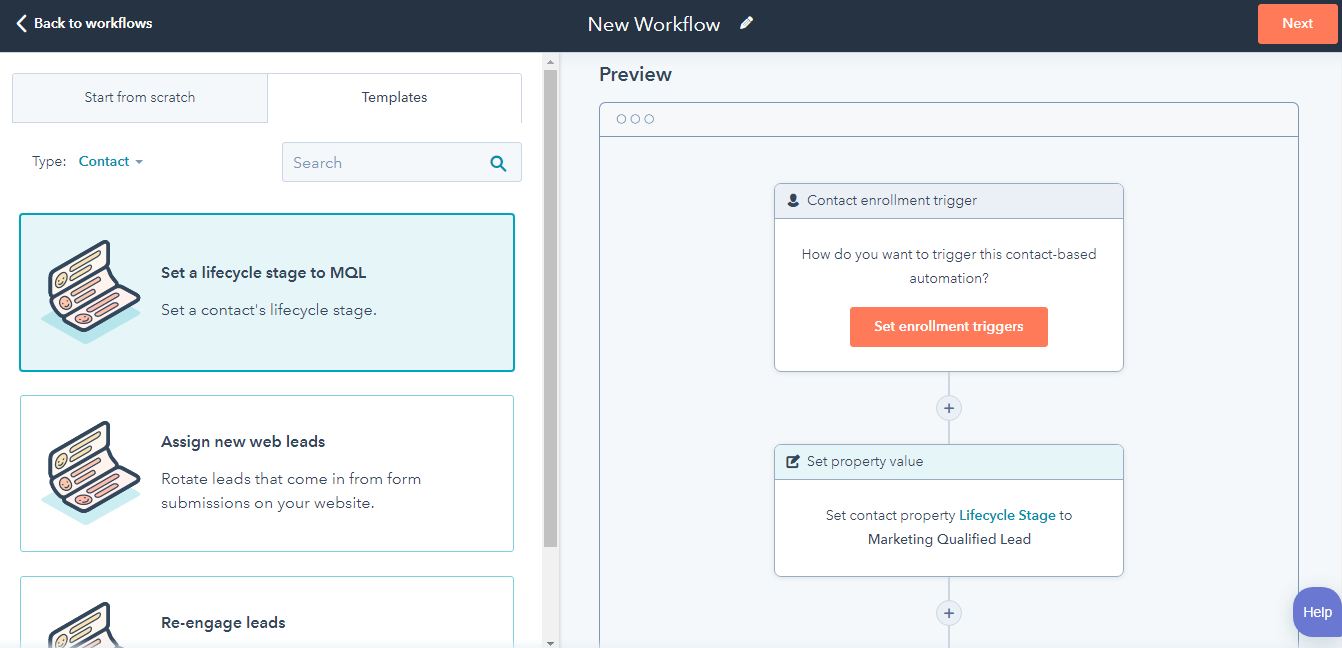
Early adopters have a competitive edge against organizations who are cautious about their technological investments. A study conducted by Harvard Business Review showed that operations that are receptive to new technologies are more likely to experience an increase in revenue and stability in growth. With that said, no department would make better use of automation technology than sales and marketing.
A salesperson wears different hats every day. Their jobs aren’t limited to income-generating tasks. Aside from setting meetings, conducting follow-ups, and preventing churn, sales reps also spend a big chunk of their workday accomplishing repetitive tasks like qualifying leads and sending welcome emails. Thankfully, in this day and age, there are technologies that you can imbibe for your operations that would make our sales process more efficient.
Creating a workflow in your CRM enable sales departments to automate repetitive tasks following a certain set of triggers. It saves your business time and resources and allows your salespeople to concentrate on acquiring new clients and keeping the ones that you already have.
The workflow available to you depends on the CRM that you use. However, for the most part, below are nine automations that can help streamline your sales process:
1. Sending Welcome Emails
Did you know that 74% of consumers expect a welcome email after subscribing to an email list? Unfortunately, less than 60% of companies send out welcome emails. This is especially unfortunate because this type of outreach generates four times more opens and five times more clicks than any other form of an email.
For most CRMs, a workflow is created when a new subscriber opts into a list. Ideally, the opt-in would trigger the sending of the welcome email.
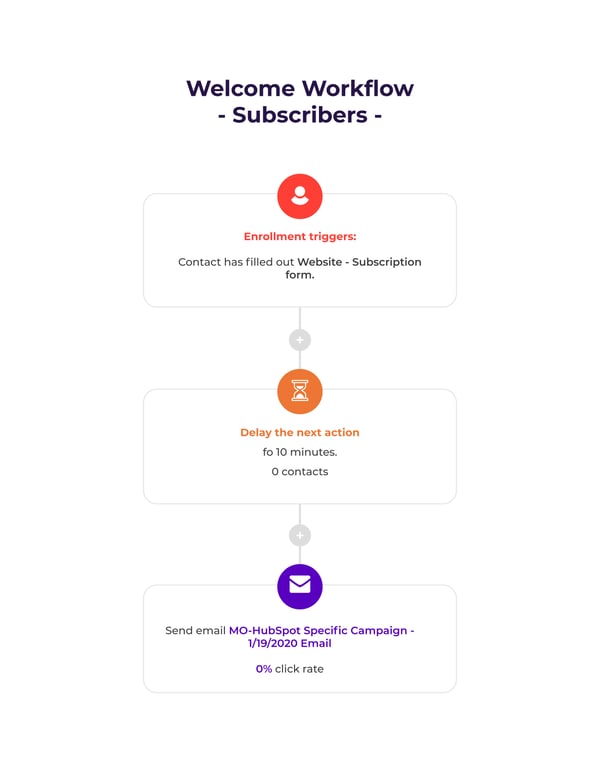
2. Qualifying Welcome Email Responses
Depending on the content of your welcome email, subscribers may have different responses to the initial contact that you have sent. The second workflow triggers the creation of a task following response to the welcome email. This workflow then assigns a salesperson to respond to the potential client.
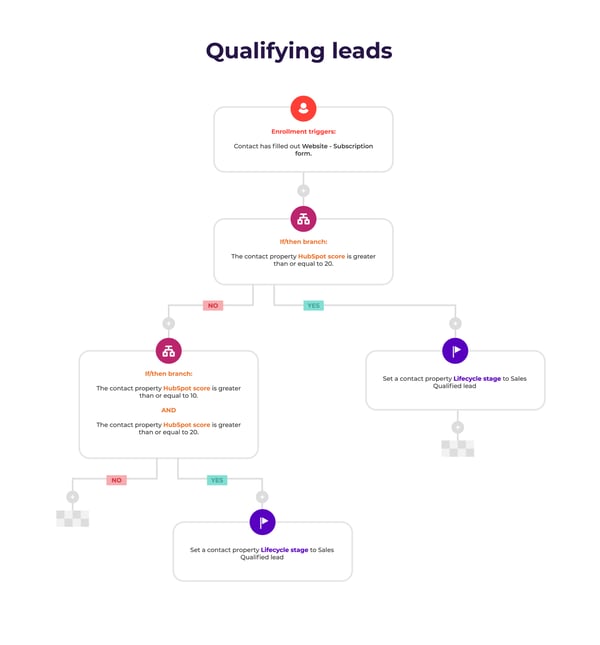
3. Automating Interested Leads
Once initial contact has been made, sales reps can already gauge how interested a potential client is. Once they express interest, the can already be tagged as a contact. The third workflow automates the creation of an account once a lead becomes a contact.
4. Scheduling Appointments
Scheduling meetings is arguably one of the most tedious tasks salespeople have to accomplish day to day. Ask any sales rep, they’ll tell you that it can be frustrating to deal with clashing schedules and timeslots.
Another essential workflow that you can add to your CRM is the automation of appointment schedules. Once contact is tagged as a “qualified lead,” a set of timeslots would be emailed to the client. This way the potential customer gets to choose the exact time and date he or she is available.
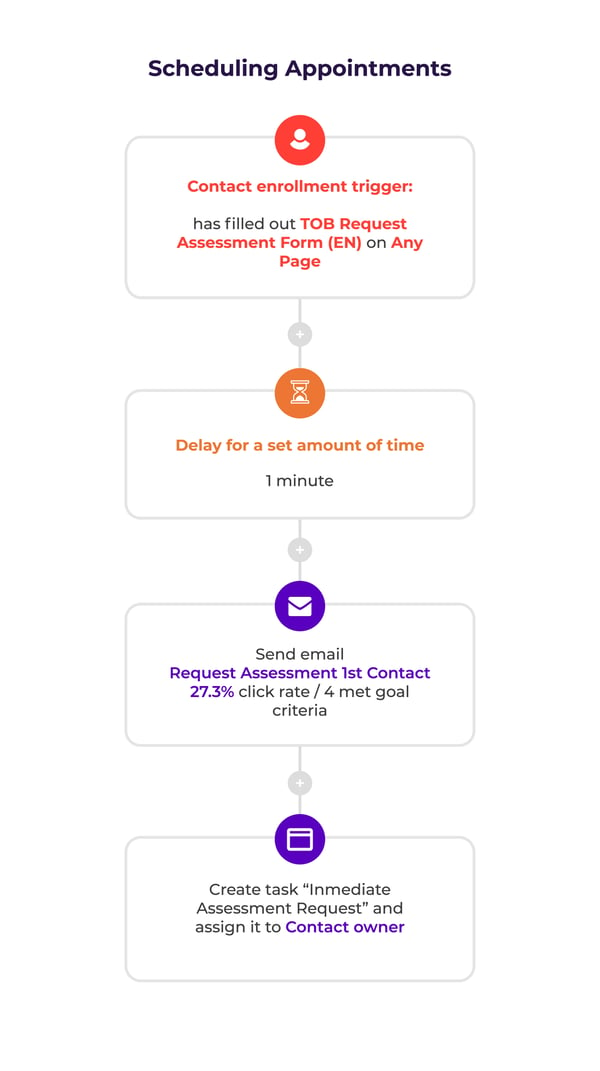
5. Sending Reminders for Appointments
Meetings make-up 56% of most CEOs’ workdays. With that said, it isn’t out of the realm for them to forget appointments. Sending an automated meeting reminder to your client as well as the assigned sales rep can save time and resources. This allows the sales rep to prepare his or her presentation as well as remind the client to carve out time for the meeting.
This workflow can be triggered X days after the appointment has been set.
6. Scheduling a Follow-Up for "No Response" Appointments
No matter your diligence, there are instances when a client has to beg off of a meeting without any notice. It is your sales reps’ responsibility to find out why. When an appointment is tagged as “no response,” aw workflow can be triggered to assign a task to the sales rep to follow up.
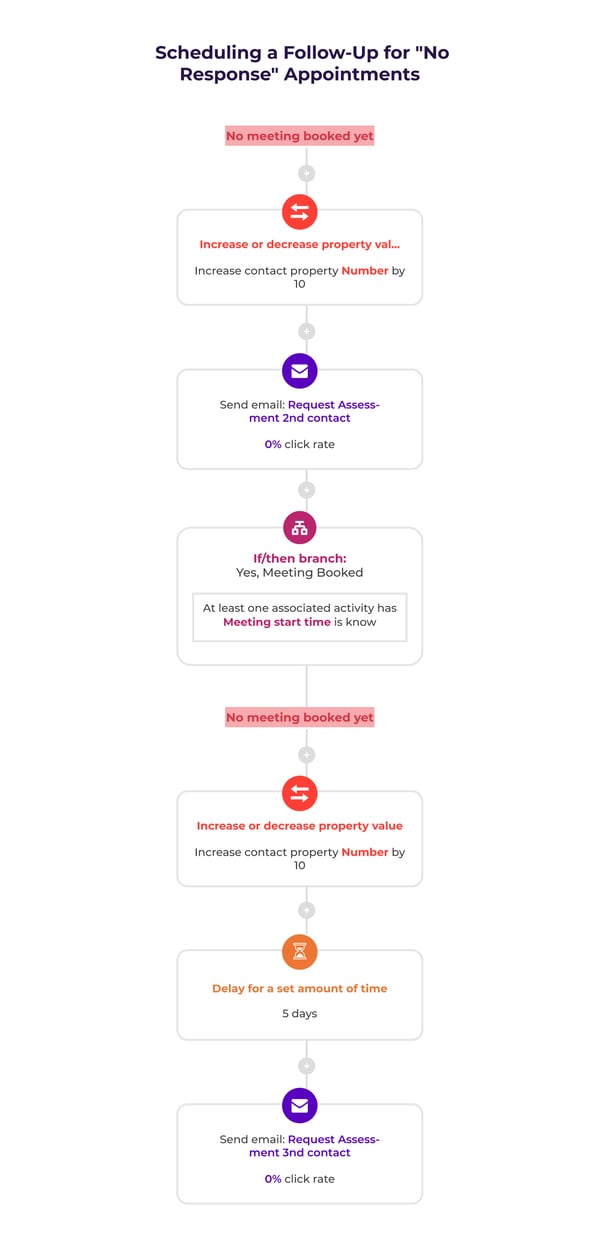
7. Marking Unqualified Leads
But what happens if the lead is uninterested or unqualified? Following the meeting, a sales rep can tag a contact as “not interested.” This triggers the workflow to automatically tag the account as “unqualified.”
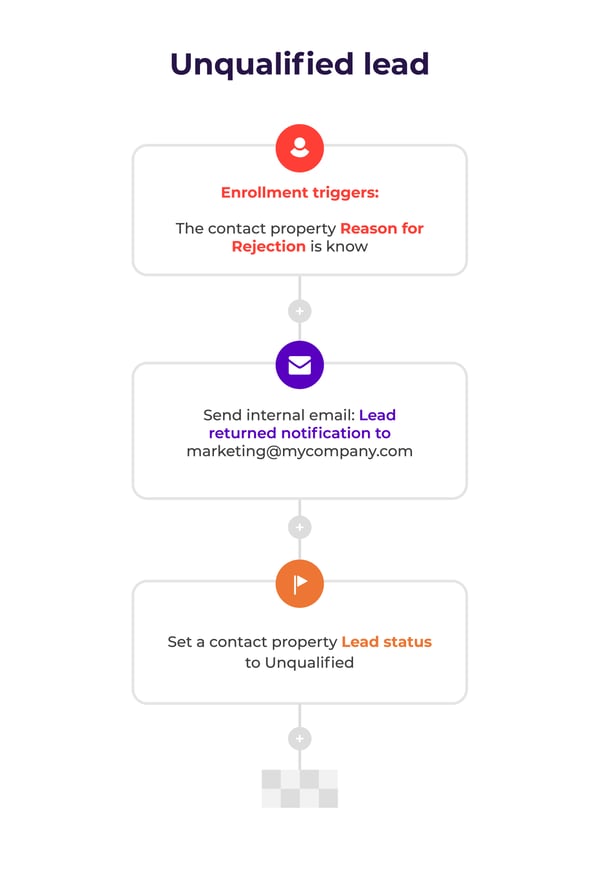
8. Following Up on Interested Leads
For salespeople, there are very few things sweeter than a successful meeting with a qualified and interested lead.
A workflow can be created to move the deal forward onto the next stage. Once an appointment is marked “successful,” the deal stage is updated and a task is created for the sales rep to schedule a follow-up.
9. Marking Deal Won
Do you know what’s sweeter than a successful meeting? Closing a deal! Developing workflows on your CRM allows you and your salespeople to celebrate acquiring a new client hassle-free!
Depending on your CRM, several actions can be triggered after a deal is tagged as “won.” For the most part, this type of workflow triggers the activation of the account, the sending of the onboarding email, and the endorsement to the specific account executive.
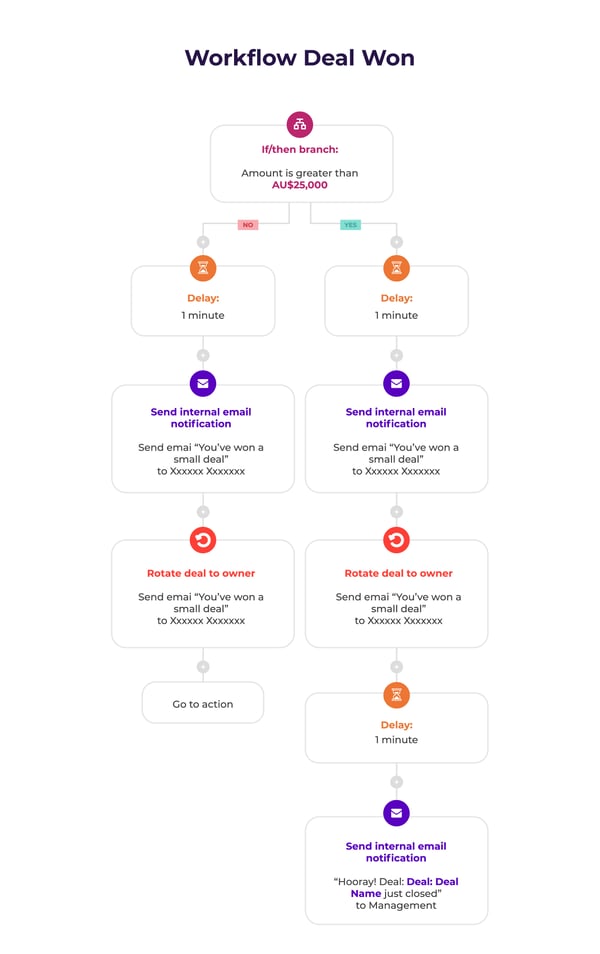
The workflows above are our best examples but you can create workflows that best suit your sales process. These nine options allow you to tap into your sales department’s full potential without the hassle of tedious tasks weighing your reps down.
As they say, it is all about working smart instead of working hard. Developing workflows for your operations is proof of that!
TABLE OF CONTENTS
Stay Updated with Our
Latest Posts
Subscribe now to receive the freshest content, insights, and updates directly in your inbox.

Recent Articles


2024 © The Orange Box Agency – All rights reserved




.png?width=90&height=90&name=facebook%20(1).png)
.png?width=94&height=96&name=Vector%20(1).png)